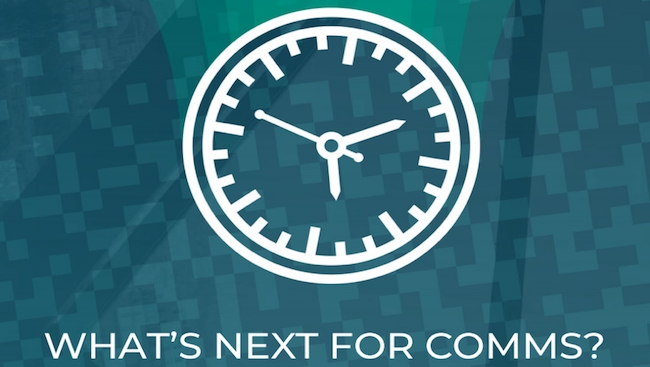Leader Talk
What's next for communications in 2020?
In the coming time, people working in media industry need to pay attention to the main trends in the world in order to constantly change and maximize their role.

In the past few months, all public relations (PR) professional and experts around the world have been arguing over which scenarios for the communication activities in 2020. Recently CISION Group (NYSE: CISN) has provided an e-book “What’s next for comms in 2020?”. The report summarizes the five main trends of communication this year.
The lines between PR and marketing will dissolve
It can’t be denied that the lines between marketing and PR activities is gradually fading. In fact, the goal of marketing activities is to stimulate demand, increase sales. The goal of communications is to create awareness, build trust and keep loyalty with the brand. Being well-awared but not leading to buy things is similar knowing a good coffee brand but never visiting an outlet to take action. On the contrary, having consumer’s demand but don’t know their favorite brand is like going to a convenience store without knowing which products are good enough to try.
Therefore, recognizing a product brand, believing in the quality of its product, buying and introducing to others is an inseparable process between marketing and communication activities.
Besides that, according to USC Annenberg's global media report in 2019, up to 51 per cent of communicators expect more integration with marketing over the next 5 years. The integration between marketing and communication will be stronger.
Therefore each organizations must change constantly. And even then consumers at each touchpoint also are unable to clearly distinguish whether this information or activity aims for marketing or communicating a certain message. Especially when the story telling is getting more focused. It is also a fact that many media companies nowadays tend to recruit personnel from those who are inclined to make advertising and creative content.

On the other hand, with the application of the integrated marketing communications (IMC) model, the role of communication and marketing is closely linked. It can be seen that over the years, this model has become quite popular and has certainly impacted on delivering a clear, consistent and convincing message that has driven on consumers’ behavior (towards buying behaviors).
Due to this marketing and communication plan, it allows to evaluate the strategic role of many different components in the media cycle such as advertising, promotions, public relations, direct marketing... The strategy of combining marketing and communications activities is more and more valuable instead of running them individually and automatically.
Both communication and marketing sectors have had a great change in the digital revolution
The change of communication and marketing sectors in the digital revolution has also led to big changes from any organizations.
The position of CMO (chief marketing officer) is gradually eliminated and in favor roles of chief growth officer or customer/chief experience officer. This proves that the role and mission of a CMO will be broader including more responsibilities and the most important responsibility is to grow the business.
There is no doubt if an organization can recruit a suitable CGO position, this position is also considered as the second "CEO". Perhaps so, the world's leading corporations such as Coca-cola or Johnson & Johnson have been the pioneers in restructuring with this direction. This trend will certainly continue this year and many years to come.
Marketing leaders use data and analytics to drive key decisions
According to Gartner Annual CMO Spend Survey 2019-2020, 76 per cent of marketing leaders say they use data and analytics to drive key decisions, but many still struggle to get this right.
Nowadays with the support of digital monitoring tools, the measurement of marketing and communications activities is quite clear. It shows whether the evaluation of each campaign is effective or not, what adjustments need to be made and the extent of impact. When taken the survey of more than 1,563 professional PR practitioners, of which 803 are very active in consulting companies, 760 are active in-house media, 28 per cent of PR experts in the US shared that they needed a solution to retrieve the measurement results.

The rise of social media has greatly influenced traditional media activities.
Many news agencies have had to reduce staffs, meanwhile the problem of fake news is getting worse. That leds to the relationship between communications and the publishers under risk. Besides, Influencers and KOLs also contribute to this chaotic picture of media. It also raises the ethical issue when doing communication activities.
According to the Business Insider report, the budget for marketing through influencers will continue to rise and is expected to reach $15 billion by 2022. Moreover, according to the annual USC Annenberg survey in 2019, 38 per cent of CEOs in the US believe that the most effective way to communicate with their businesses is through influencers, then to their owned media channels is 36 per cent, 14 per cent for earned media and 12 per cent for paid media.
The “adaptability” need to be prepared by any communication professionals
If communication professionals are unable to adapt to new changes, they will fail. Assuming only marketers need to work with numbers, reporting tools is wrong. Even today communicators also need to equip themselves with marketing skills and knowledge. They need to work with numbers and understand such metrics as SEO, Google Analytics, CRM or CMS software ...
However, by all means, never forget at any stage, the art of telling a story with creativity, harmony and relevance always plays an important role.
Communication’s funnel: Right understanding to true value
Vietnam turns semiconductor vision into action
The global semiconductor industry is being reshaped by geopolitical tensions, shifting supply chains, and the surge of digital technologies.
Cutting red tape in APA approvals to speed up tax negotiations
The change in APA approval authority is expected to shorten processing time and enhance business proactiveness in international tax negotiations.
Enterprise cybersecurity is under threat from the inside
As hybrid cloud systems grow more complex, Vietnamese enterprises are struggling to detect cybersecurity threats moving laterally within their own networks.
Breakthrough for the international financial center ambition
The submission of the draft resolution on Vietnam’s international financial center to the National Assembly heralds a new developmental era for the country.
How leadership philosophy redefines hospitality in Nha Trang
More than just running a 5-star resort, Kristian Petersen is redefining the art of hospitality with a humane and sustainable leadership philosophy.
When organic becomes an inspiring wellbeing lifestyle
For Tyna Huynh, co-founder of Drinkizz, organic is not just a food choice but a way of life that fosters a deep connection between people, nature and community.










































